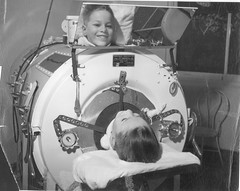The Skull Collectors: Race, Science, and America's Unburied Dead
By Ann Fabian
University Of Chicago Press (October 15, 2010)
Judging from Amazon's Look-Inside feature,while the Army Medical Museum is discussed regularly, the author did not actually use the Museum's archives, instead working from the Surgeon General's Office records in the National Archives, and correspondence transferred to the Smithsonian's National Anthropological Archives.
Available in the Museum's archives are
Curatorial Records which cover the subject especially
OHA 13
* Curatorial Records: Incoming Correspondence (Loose), 1862-1894
* 2.5 cubic feet, 5 boxes.
* Finding aid, arranged, inactive, unrestricted.
* Correspondence, arranged alphabetically, from the first two decades of the Museum's existence. The series ends when the Museum began a correspondence numbering system (see Curatorial Records: Numbered Correspondence). Includes letters sent to curators John Brinton, George A. Otis, D.L. Huntington, John S. Billings, and Walter Reed. Most of the incoming correspondence from this period is currently missing.
OHA 15
* Curatorial Records: Letterbooks of the Curators, 1863-1910
* 8 cubic feet, 17 boxes.
* Finding aid, arranged, inactive, unrestricted.
* Bound volumes of outgoing correspondence by curators John Brinton, George A. Otis, D.L. Huntington, John S. Billings, Walter Reed, James Carroll, and F.F. Russell. See Curatorial Records: Outgoing Correspondence (Loose) for other outgoing correspondence that was not recorded in these books.
OHA 25
* Curatorial Records: Smithsonian Correspondence, 1867-1887
* .5 cubic foot, 1 box.
* Finding aid available, arranged, inactive, unrestricted.
* Incoming correspondence, mostly from Smithsonian Secretaries Joseph Henry and Spencer Baird, relating primarily to the exchange of specimens between the Museum and the Smithsonian. George A. Otis, D.L. Huntington, and John S. Billings were curators of the Museum during this time. See Museum Records: Accession Records and Curatorial Records: Letterbooks of the Curators for related correspondence.
OHA 26
* Curatorial Records: Special Correspondence, 1862-1887
* .75 cubic foot, 2 boxes.
* No finding aid, arranged, inactive, unrestricted.
* Box 1: Correspondence relating to photography and photographic services at the Museum between 1862 and 1885. Includes correspondence of curators George A. Otis, D.L. Huntington, and John S. Billings and Surgeon General Joseph K. Barnes. Box 2: Correspondence relating to the craniology collection and craniometric/anthropometric measurement at the Museum between 1862 and 1887, mostly sent to curators Otis and Billings.








































